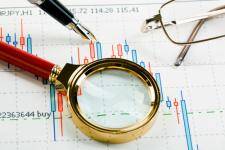 There is a well recognized phenomenon that combining forecasts, derived from different methods using different sources of information, can improve forecast accuracy. This approach, sometimes called “ensemble forecasting,” is available in SAS Forecast Server.
There is a well recognized phenomenon that combining forecasts, derived from different methods using different sources of information, can improve forecast accuracy. This approach, sometimes called “ensemble forecasting,” is available in SAS Forecast Server.
 There is a well recognized phenomenon that combining forecasts, derived from different methods using different sources of information, can improve forecast accuracy. This approach, sometimes called “ensemble forecasting,” is available in SAS Forecast Server.
There is a well recognized phenomenon that combining forecasts, derived from different methods using different sources of information, can improve forecast accuracy. This approach, sometimes called “ensemble forecasting,” is available in SAS Forecast Server.
Per Scott Armstrong’s review of 57 studies on combining forecasts, “the combined forecast can be better than the best but no worse than the average” of the forecasts being combined.* So when you have a situation where it isn’t clear what particular forecasting method is most appropriate, a simple average of several competing methods may be the way to go.
Gathering information from different perspectives is valuable in many other ways. Henry Ford preferred to have an outsider head each new division, because such a person “wasn’t already familiar with the impossible.”
An outsider provides fresh eyes on the problem. An outsider’s viewpoint is not encumbered by the dogmas that go unquestioned by the insiders. We can usually learn a thing or two by observing how the outsider thinks about our problem. So can a demand planner, concerned about filling orders and managing inventories, learn a thing or two from someone who forecasts the price of stocks?
What Demand Planners Can Learn From the Stock Market
The Fall 2012 issue of Journal of Business Forecasting provides us the stock market forecaster’s perspective in an article, “What Demand Planners Can Learn from the Stock Market,” by Charles ReCorr.
ReCorr begins with the important (but sometimes overlooked) reason why we forecast:
…because all decisions we make require some expectation about the future. Accurate forecasts improve our chances of making the right decision.
He also notes a clear distinction in the decisions to be made and the ability to react to a changing forecast:
The response time for a company to react to, for example, the hint of slowing sales is not the same as that of an institutional investor receiving the same information. A company has to work around production issues, inventory levels, human resource polices and the like before it can respond to changing markets.
The investor, on the other hand, can respond instantaneously with a buy or sell order.
ReCorr identifies seven characteristics that make a forecast useful his investor clients:
Timeframe – The date or period being forecast (e.g. closing price of the S&P500 on December 31, 2013)
Direction – Is the forecast up or down (compared to today’s price or other baseline)
Magnitude – The specific amount or “point forecast” (e.g. S&P500 will be at 1625)
Probability – The distribution of possible outcomes around the point forecast (e.g. 50% chance it will be above 1625, 75% chance it will be above 1575, etc.)
Range – The high and low value for possible outcomes (e.g. 1450 to 1750)
Confidence – A statistically based or subjective “prediction interval” (e.g. 95% confident that it will be between 1550 and 1700)
Historical Forecast Error – Accuracy and bias of previous forecasts
A forecast is useful when it provides enough information to improve decisions under conditions of uncertainty. These characteristics that make a useful stock market forecast would also improve the usefulness of demand forecasts for supply chain planning (where we usually lack anything beyond the point forecast).
Perhaps the least we demand planners can do, in bringing our forecasts to management decision makers, is to fairly present the likely range (and probablility) of possible outcomes. Point forecasts, by themselves, can lead to overconfidence and the taking-on of unnecessary risk. Before making a decision, business managers (like stock market investors) need to know whether (and how) they could live with an outcome that may be far from the point forecast.
—————
*For a thorough discussion, see Scott Armstrong’s chapter on “Combining Forecasts” in his Principles of Forecasting.







